#posthuman war part 2 spoilers
Text
Raven, introducing Caravan: “…a rousing tale of suspense! Merriment! Drama!”
Kate and Marjolein after leaving the show: I was promised merriment. wHeRe WaS tHe MeRrImEnT?! WHERE WAS IT.
#shaperaverse#incorrect quotes#incorrect shaperaverse#Adams Arc Caravan#posthuman war part 2#kate the narrator#Marjolein#Raven#posthuman war#posthuman war part 2 spoilers
36 notes
·
View notes
Text
References in my “Book of the Peace” story
Editor Philip Marsh and Obverse CEO Stuart Douglas were so kind as to include my short story “A Farewell to Arms” in the late 2018 / early 2019 Faction Paradox anthology The Book of the Peace. The prior October, to promote the anthology’s preorders, I posted “References in my Book of the Enemy story” on this blog discussing the references I included in “Cobweb and Ivory”. I don’t have anything new to promote yet (although watch this space!), but now that almost two years have passed since I finished writing “A Farewell to Arms” at 2:44 AM one morning, I figure it’s about time I sit down to finally re-read it and share some notes in the same fashion.
Standard warning: Quite predictably, this post is chock-full of spoilers for my story “A Farewell to Arms”, so you should read it first. If you haven’t and you read this anyway, please consider buying The Book of the Peace to read it and several amazing other stories!
Part One
To begin, the incredibly original title explains how my story is connected to the theme and title of the anthology: the end of the War means that the weapons trade will take a big hit, provoking Huxley’s scheme. In other words, the discovery of the Book of the Peace heralds a Farewell to Arms.
The original “Shockley’s Den of Almost Limitless Iniquity” appeared in Alien Bodies. “The DALI” is unsurprisingly a reference to the Salvador Dalí Museum, which I have enjoyed spending many hours visiting.
Of course I have to mention military nuns, because you’re not a pulp science fiction author until you mention military nuns, and part of my motivation for this story was parodying pulp science fiction within Faction Paradox, which I feel very strongly is not in fact science fiction at all. Did I fulfill more tropes than I subverted, and become the very thing I sought to parody? That’s for you to decide!
I’ve always wanted to see how members of non-human-descended species cope with the existence of the City of the Saved, which offers an afterlife exclusively for humans and posthumans. Nezf’s story is one idea of how that might play out.
T mentions the Utterlost Accords, which were first mentioned in Simon Bucher-Jones’ linking material for The Book of the Enemy.
There are a few unpronounceable names in this story as a joke about pulpy stories where characters have names that I can’t pronounce in my head. Nezf and Ka(h) Loquo are two of them, and the “sounding it out” was meant to be a wink to the audience. Did my attempt at metanarrative wit fall flat? For you to decide, yada yada.
There’s a reason for the (h) in Ka(h), but the world isn’t quite ready for that yet.
Enter Huxley and the Shift, moments after “A Shift in Focus”. In my opinion “crime boss” is unfortunately often a male-coded role in fiction, so I intentionally didn’t specify Huxley’s pronouns until her arrival. I had a lot of fun writing her character, rhetorical questions and all; I hope I get the chance to do it again someday!
The ivory cube with Homeworlder hieroglyphs might call an image to mind for any fans of a certain British television series; ditto the phrase “Greater Key”. The one person who thinks it’s a metal rod is obviously Lance Parkin.
The story of RMS’ new name is portrayed in “A Farewell to RMS”. The Plume Coteries and the Amazolian system each appeared briefly in “Cobweb and Ivory”.
The Big Bang was nicknamed “Event One” in Castrovalva.
Huxley remembers when the old war king was a magistrate. This nods to the hint from The Taking of Planet 5 that the Magistrate from The Infinity Doctors became the War King during the War. Depending on when you’d like The Book of the Peace to fit in the timeline, you can read “old war king” as meaning “the previous War King” or “the War King who is old”!
Cheers to my friend Nilso for donating the name “Yvleperal”. In a previous draft, it was specified that they’re the species who inherited RMS from the Plume Coteries; the “Yvleperal’s allies” line could have used some more editing. Whoops!
Speaking of prior drafts, this scene originally ended quite differently, although I had to cut it in rewrites:
“One more thing,” Hux called as the Shift opened the door. “Don’t even try to pull any shit, got it?”
Everyone nodded, and, one by one, they left the room. None of them noticed the puddle on the floor beginning to steam.
“They bought it?” it hissed. Bit by bit, the pool of blood bubbled into a more concrete form, a crude body with spindly fingers and hair like a jester’s hat.
“You did perfectly, my love,” Huxley said to Ka(h) Loquo. “After our performance, none of them dared doubt the plan.”
“Just imagine their reactions the next time they see me.” Ka(h)’s face, still putty-like, stretched into a crude imitation of a shocked grimace.
“Oh,” she said, tilting back her head so he could kiss her neck, “I doubt they’ll see either of us ever again.”
“No?” The jester-puddle began to creep towards the crime boss’ throne.
“My buyers are already waiting right outside the base. When the crew opens the way, the Military will be too busy dealing with these goons to notice anyone slipping in and stealing the Key.”
Ka(h) grinned as he curled into Huxley’s lap. “Now, that is proper devious.”
The whole first scene, and maybe the whole story more-or-less, was influenced by the film Baby Driver – or more specifically its soundtrack, which I listened to quite a bit while writing. Hence why the Beach Boys’ “Let’s Go Away for Awhile - Mono” is one of the songs accompanying this story in the Book of the Peace Spotify playlist.
Part Two
The italicised lines are a conversation between the two observers from “A Prelude to Arms” and “A Prelude to a Prelude”. They’re watching a reconstruction of the story’s events, extrapolated from the biodata of a body they found floating in space. The black hole is meant to be the one at the end of the Needle, as mentioned in The Infinity Doctors.
Each of the passers-by Nezf sees in the labyrinth are significant:
The green man covered in thorns is Coloth, a Simon Bucher-Jones character who previously appeared as a “cactus boy” in “Cobweb and Ivory”.
The minotaur carrying a book is Mr. Smith, who (naturally) lived in the labyrinth in Lawrence Miles’ The Faction Paradox Protocols.
The gigantic beast whose skeleton sits in the labyrinth is a mammoth – perhaps the mammoth whose skull rots in the Permafrost Kingdom in Yakutsk, Russia.

Wade is extremely suspicious of both robots and Homeworlders. There’s a reason for this which I’ll elaborate on one day. This little conversation is the first scene I wrote for the story when I pitched it to Phil Marsh; thank you to Niki Haringsma @nikisketches for his incredible advice at that stage!
T’s weird physical form was fun to picture in my mind, and it’s explained that it’s the result of his being tortured into his timeship in the manner suggested by Dead Romance. Others have noted that he resembles a Dalek mutant!
Another snippet from the two italics characters watching the reconstruction establishes that they’re from after the end of the War – as you might expect, from an anthology named after the Peace.
The new exit that had been drilled in a dangerous part of the labyrinth leads straight into the base on RMS. This seems like a very convenient coincidence, but there's a reason for it.
In Greek mythology, the Daktyloi are a race of finger-sized men connected to the Cabeiri. I’ve always been fascinated by cthonic gods!
The conversations begin to loop. For a brief moment, the Shift addresses the viewers of the reconstruction; unfortunately, they dismiss the message as a glitch.
The conversation about Foyle and the Eremites is a little love letter to some of the painfully underexplored concepts from The Book of the War. Wade’s belief in the Eremites is consistent with her disdain for the Homeworld; if only there were a faction of people who shared her sympathies!
T’s full name is “Tabrenilsodvoravitas”. This references House Dvora (per the standard Homeworlder naming convention) as well as my aforementioned friend Nilso, whose online handle has always amused me.
Part Three
I had the most fun writing this section, particularly the bits where characters are just stumbling through the fog. I’m more comfortable writing series of vignettes than long scenes (something I’m still working on). The mood is set by Angelo Badalamenti’s “Dark Mood Woods / The Red Room” from the Twin Peaks soundtrack!
Now we see that it’s the enemy who drilled a hole to RMS through the labyrinth. The totemic gun is a D-Mat ornament often carried by regen-inf troops per The Book of the War. The gauntlet may be similar to that seen in The End of Time, Everything Changes, and/or Remembrance of the Daleks. Homeworlder blood is ichor, another reference to Greek myth. The flashing light is mauve, the universal color of danger. T hasn’t seen anything like this in a long time – specifically, not since Mohandassa and Utterlost.
An unfamiliar figure runs up out of the fog. There’s never actually been a physical description of Nezf before, although there were hints (T’s eyes rolling right over him) – but here we see exactly how Dactyl-like he is. However, everyone is forgetting things: Nezf has forgotten his mission; Wade and T have forgotten who Nezf is; and mid-conversation, they forget he’s even there. Farewell to Nezf – perhaps it would be worthwhile to ROT13 his name.
Tears are dripping down Wade’s cheek, but she didn’t know she was crying, and this worries her. Random tears are a sign of forgetting in one of my favorite TV shows.
Wade is right: the Houses have indeed stopped making new mechanical timeships. But maybe the enemy hasn’t. The Shift helps them piece it all together. (In hindsight I cringe at the cursing in this, but they’re career criminals, so whatever.) What Wade was starting to mention about the Shift(’s body) was that it had apparently learned to use punctuation during its time in the fog.
Once upon a time, I wrote a fake The Book of the War entry about Godmother Quelch and posted it on this blog. It detailed how she was a human who traveled with a Homeworlder before being abandoned on an alien planet, where she was constantly pursued by bots determined to administer a deadly vaccine. She taught herself enough engineering to fend off the bots and survive. Eventually the Homeworlder came back for her, only to trick, betray, and abandon her at the last moment. Overwhelmed, she let the bots administer the vaccine – only to find that it was made for alien biology and had no effect on her. Using the computational signals that her defense systems picked up from the timeship, she opened a door through the Very Fabric and literally waded through time until she wound up in the Eleven-Day Empire. Of course, this gave her a reputation among the others as “the girl who waded”. I deleted the post while writing this story, and the Quelch connection was obviously abandoned, but there are two reasons that the song “Thought Contagion” was picked to accompany this story: first, because its title accurately describes the memetic predator, and second, because the band Muse is known to have at least one notable fictional fan.
In the original accepted pitch, there was an extra element to the plot: it was the Nambiro who found out about the base and hired Huxley to execute the heist, with the understanding that in exchange for a nice fee, they could gobble up any temporal weapons recovered from the base as well as the crew that recovered them. (Specifically, they were waiting outside the breach T opened in the roof: “A screech could be heard from through the gap, and a dark shadow flew in front of the gleaming sunlight.”) However, since I’d slightly misunderstood the nature of the Nambiro and several other stories came to also use the Nambiro as a last-minute plot-twist, Phil Marsh asked me to cut it. Rightfully so! It would have distracted from the story. But don’t get me wrong: it’s still true, just slightly off-camera.
Farewell to Wade’s arm. She’s fulfilled the sacred trope of resembling the Grandfather, and the loa smile upon her by bringing the decidedly pipe-shaped Greater Key. (The Houses’ eye is “amarinthine” because it works like an amaranth from Lawrence Miles’ Christmas on a Rational Planet.) Like Billie Piper, Wade finds herself acting as both Moment and Bad Wolf, so she solves the problem the only way she can: bidding a Farewell to RMS.
… but the problem isn’t quite solved, after all. One corpse survived, somehow, and its identity is unclear. We never see what happened with the Shift’s body – is that it? Or is it the body the Shift originally inhabited, before being Shiftified? Or maybe, could it be a character forgotten from the story, which would explain why the earnings were to be split six ways? In any case, the memetic predator lives on…
Despite not being in the best place when I was writing this story, I’m still fairly happy with it. The only thing pestering me now is that I am certain there’s at least one more “Farewell to Arms” pun hidden in there somewhere, and I’ve completely forgotten what it is…
Up next: References in my Book of the Peace Dossier stories!
14 notes
·
View notes
Text
Essay 3: The Other Defined as Human, Through Alien Form
Throughout this class we have looked at the other, and what that means to us as individuals, but more so as a collective. The form of the other is based off of cultural, and societal fears, and concerns. The other takes many forms, and is always evolving. We have created more and more things to be frightened of, and to explore. We started with the dark and went to the light, and are now circling back to the dark… of space! Humans have explored and documented and found out so much about our own planet that it is hard to find the other, and to exploit that fear. So we have moved forward to space.
Outer space, what Americans like to call the final frontier. This is a section of the known universe that we do not know. Because of its size, we have only been able to go so far with our limitations of you know, needing to breath and eat and stuff! But, we can speculate about what it is that we don’t know out there. This comes in the form of space exploration, alien encounters; attacks/ visits. But what these interactions all have in common is humanity.

We give interactions a character. Interactions between humans, humans and animals, spirits, rocks, trees, every encounter we have is characterized by some human trait. For example, you meet another person and they are quite rude and unpleasant, this interaction is characterized by the word rude. This is a human behavior, and perception of behavior. For another example a person my come in counter with a tree during the winter that shields them from the snow. This is good and friendly. Trees by nature are not friendly or unfriendly, but when we perceive that the tree has helped us (on its own will), we see this as a friendly or kind act. We use this same thought process when identifying what an interaction with the other is, we find the human in it. If there is an attack, the adjective of the interaction is mean, bad, hurtful, or some other human trait or feeling.
“Indeed, the relationship between figure and ground upon which perception is based abrogates the possibility of absolute otherness; one needs a background to distinguish the salient features of the foreground. Built into the concept of otherness is the idea of relationship, the question other than what? In terms of the alien encounter that what is necessarily defined in human terms” (Malmgren 4)
In Self and Other in SF: Alien Encounters by Carl D. Malmgren, we are told that humans cannot imagine the other because then it would not be unknown. Everything that man thinks of becomes known, and with this concept we cannot prepare our self’s for what is to come. Alien encounter movies really started to become popular in the 50’s due to the space race. This opened Earths doors to intergalactic space travelers. This could be aliens in need of help, such as E.T., or those who came to destroy, like in The Day the Earth Stood Still. One film that does a great job of explaining this in part at least, is The Hitch Hikers Guide to the Galaxy. This film was a book first, but was turned into a movie and does a good job of explaining how even though the human mind has many encounters every day, it characterizes them all in terms of humanity.
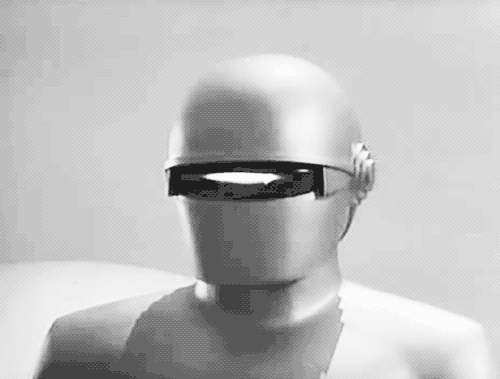
But in more recent times, alien encounter films have been more about the cultural worry of the survival of the human race, and the planet. We have seen many movies like Sunshine, and Interstellar come out that show our world dyeing, and the human race must find a way to safe either the planet, the species, or both. Global climate change has really started to show what it will do to the world. These things are escalated in films, by the use of future projections, and exaggerated carbon outputs. But these films, like all other horror/ thriller films give humans a safe space to explore their fears, and the possibilities of the future. That is one thing that extraterrestrial films provide that many other horror films do not, a look in to the future. SiFi (science fiction) lets human brains explore the possibilities of the future, what technology awaits, what advances, new planets, foods, sights, anything. Sifi gives their audience a way to explore the new – or imagined new, in a safe place, while also critiquing current society, and cultural fears.
With contemporary culture fearing planet death, and longevity of the species, it is only natural that we seek out thrills like alien encounters, with these encounters also lies the hope for new and different technology that could help safe our way of life. One of the most recent extraterrestrial films that has been released, Annihilation, is almost about the opposite of that. (Spoiler alert if you have not seen the film I am about to tell a lot of it!) In this film, a bubble of sorts has cast its self over a large portion of land, and has started to change everything within its radius. As you watch the film, you see many signs of new life, and old live combining. At first you see the bubble as perhaps a terra forming tool. It is changing the planet, and its inhabitants to look more like its self. Bu then the characters of the story find out that it is reflecting its self (an alien life form) as what is on the planet already, and changing its self, but in doing so also changing the current residents. The further and further the characters go into the bubble, the more changes we see. But at the center is a light house. In my opinion this light house stands for self, and true values. It is at the center of all the chaos and in it we find this other being that reflects human form, because that it what it has seen.
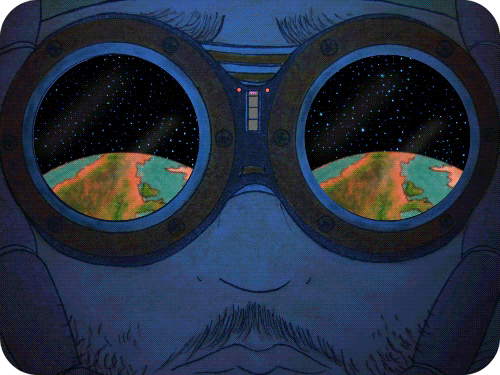
This is a huge critique of how humans act in the ways we see. Nature vs nurture has been a huge debate for centuries, but in recent years we have really started to see it’s that behavior is all about what is nurtured. We do as our guardians show us, and we pick up little attitudes, and ways of being from all we encounter. This has been a huge problem in wars, religious believes, and many issues in the U.S. recently. With all the hate crimes happening in recent years we really need to look at who we are reflecting, and in what ways that is changing us, and how we are changing our surroundings due to that.
As the film is coming to a close, we discover all the other form of life has done is mirror human nature, and try to be the same, this creates miscommunication (the down fall of all), and fear. When humans are in a state of fear we generate 1 of 2 responses, fight or flight. These responses are quick and will turn a situation completely the wrong way if the response is not appropriate. In this film neither of these responses was correct. The main character should have slowed down and assessed the situation to find out what was actually happening.
“An obvious way to suggest a "real" alien-encounter is by indirection, focusing not on the alien itself but on the human response to the alien. An author can, for example, render the human response in terms that draw on the reader's "sense of wonder," that "indefinable rush when beholding something odd and new and perhaps awesome” (Malmgren 26-27)
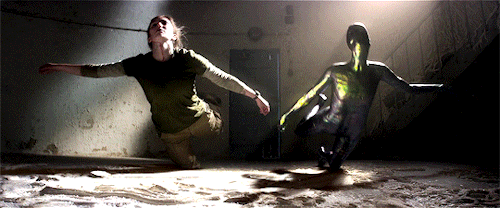
Currently the collective fear of irreversible environmental damage is heightened, and is taking over many film genres. We see it most heavily in alien SiFi because we want to fix it. SiFi gives that hope for advanced technology that will fall in our laps and save our planet. So much current tech has come from tv and movies, that we have come to expect to see the new and amazing from films.
This version of exploration of the other is becoming more and more popular. It really targets what we are currently frightened of and explores the possibilities and dangers of space exploration and alien encounters. Fear drives our thirst for knowledge. To find the new we must explore the unknown, for us this is scary and we need to speculate on the, what if’s, that often come to mind. When we find this place to explore our fears, we find a way to comfort our self’s. We find the answers we need for us to in good will say, it is okay to push onward and find out what is out there, because whatever it is, can’t be anywhere near the horrors we have thought up. This exploration of the unknown also lets us dig deeper into our self’s as humans and assign those human qualities and traits to the other or to a situation, and make it human. When we make this space encounters human, we turn the spyglass towards our self’s and critique what we are doing as humans, and how we can change it.
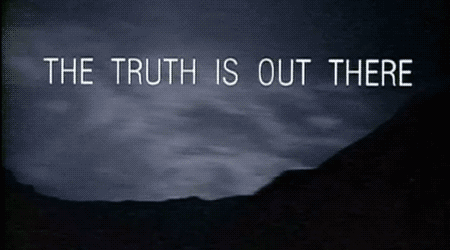
Malmgren, C. D. (n.d.). Human Skins, Alien Masks. Science Fiction, Alien Encounters, and the Ethics of Posthumanism, 15-33. doi:10.1057/9781137367631.0010
3 notes
·
View notes
Text
Why is this what I see every time Lloyd says “Let’s razzle dazzle ‘em” in posthuman war 2…
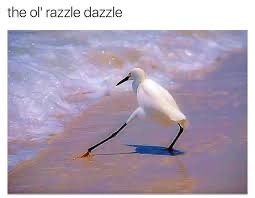
#shaperaverse#the posthuman war#posthuman war part 2#the posthuman war 2 spoilers#caravan#lloyd allen
6 notes
·
View notes